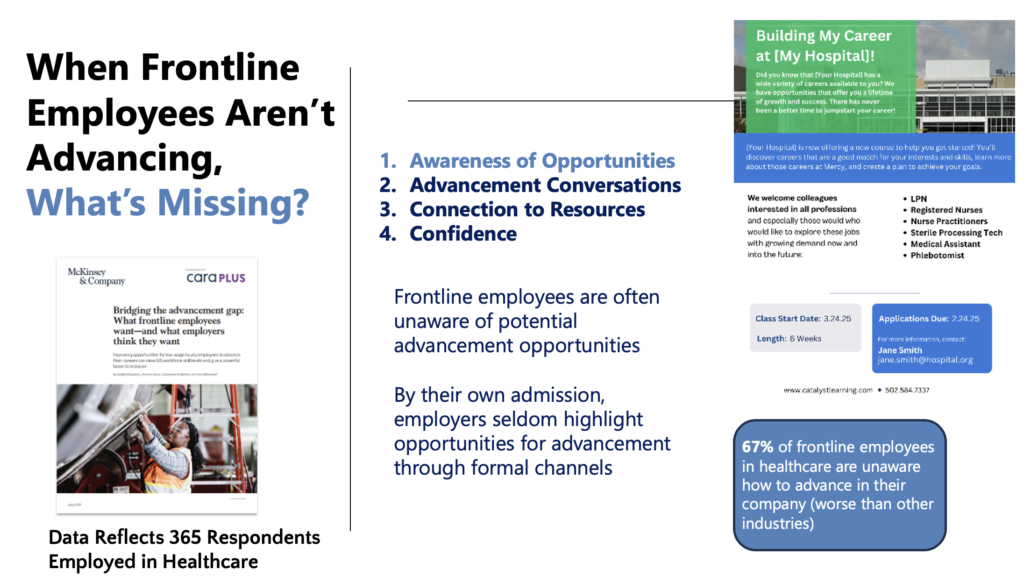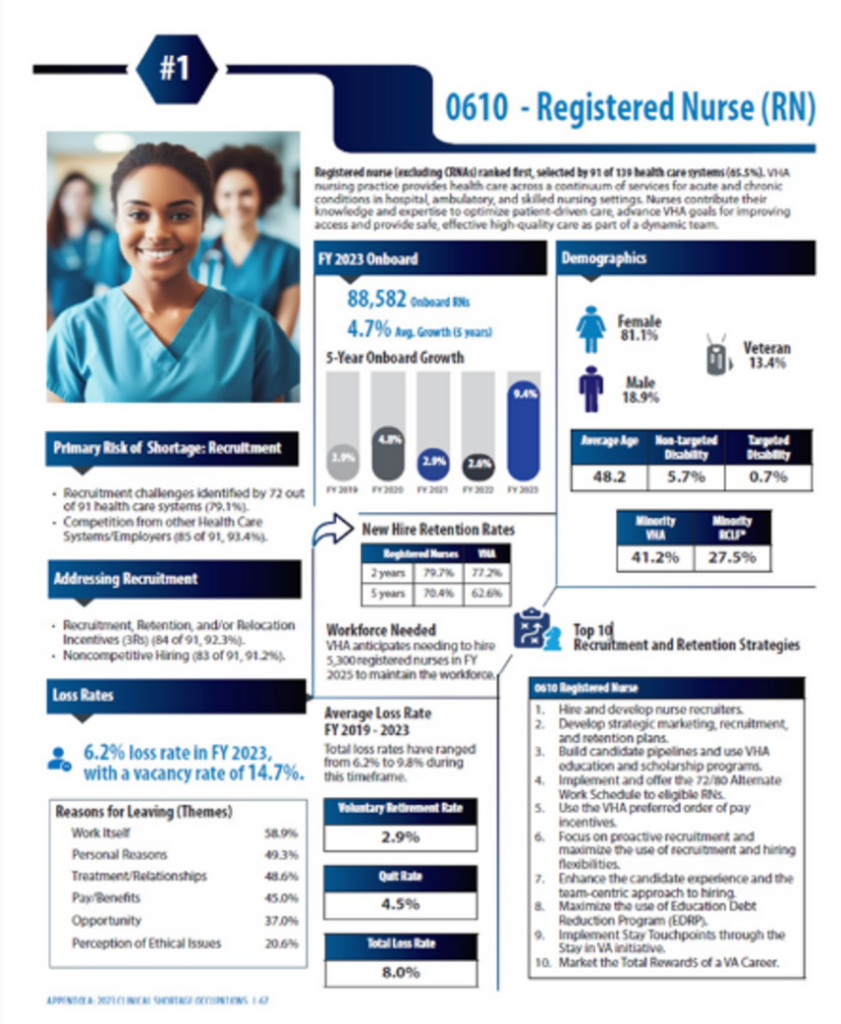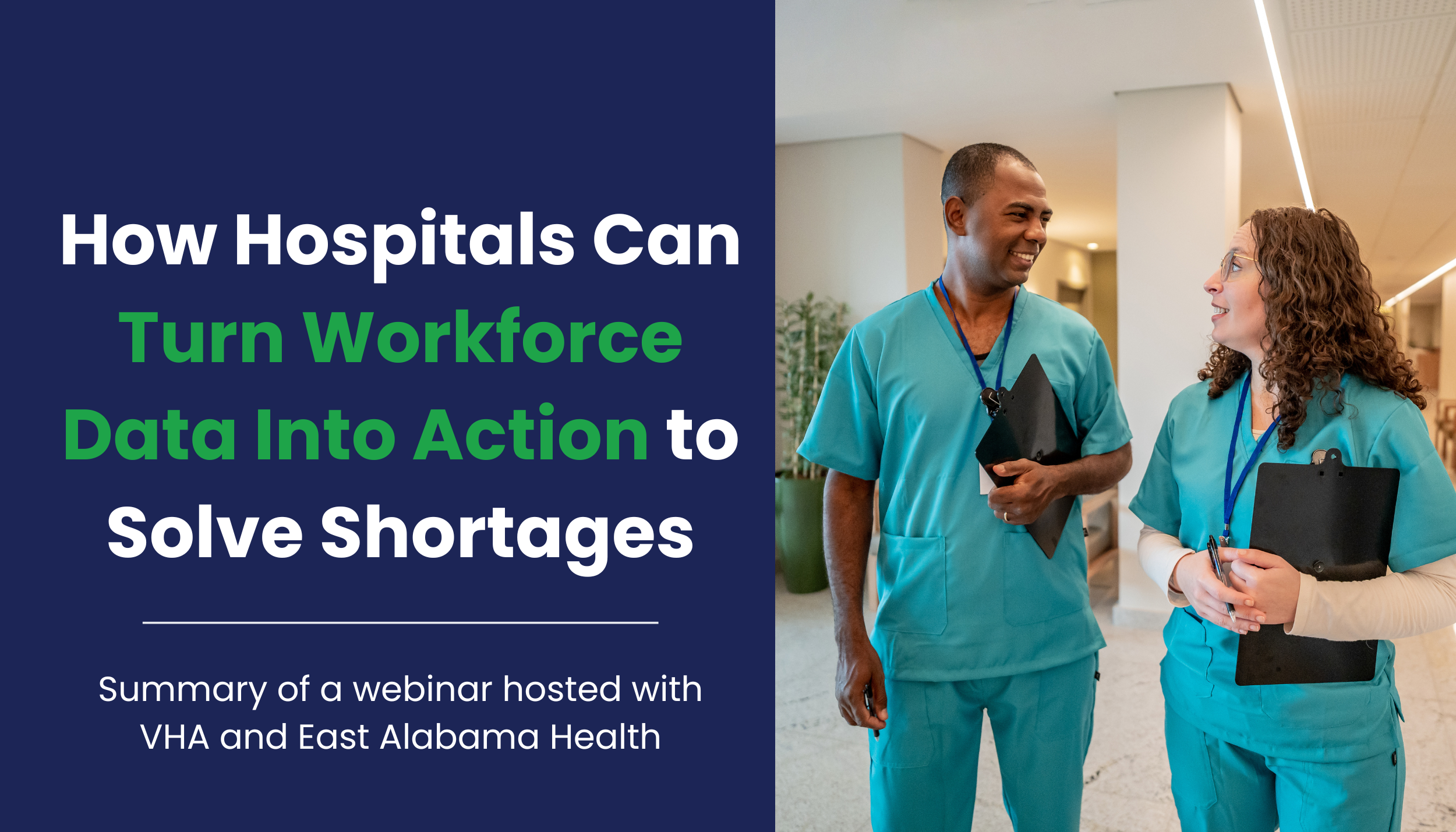Written by Joyce Borgfield, DNP, RN
For more than 30 years, Catalyst Learning Company (CLC) has partnered with over 670 hospitals and empowered more than 45,000 frontline workers to develop essential workplace skills and advance their healthcare careers through targeted workforce development programs. Recently, CLC recently hosted the webinar Turning Data into Action: Applying Workforce Data to Solve Occupation Shortages, featuring leaders from the Veterans Health Administration and East Alabama Health. If you missed the webinar, you can watch it here.
Why Aren’t Frontline Employees Advancing?

Lynn Fischer, CLC Founder & CEO, launched the webinar with an overview of the McKinsey study, asking the question, “Why Aren’t Frontline Employees Advancing?”. Frontline employees are often not aware of opportunities and employers are not having regular advancement conversations with employees. The study highlighted strategies employers can use to connect employees to resources for career advancement. The webinar showcased how the Veterans Health Administration (VHA) and East Alabama Health, long-time partners with CLC, are bridging the gaps in career advancement addressed in the McKinsey study.
Turning Data into Action: Workforce Planning
The VHA is America’s largest integrated health care system, providing care at 1,380 health care facilities, including 170 medical centers and 1,193 outpatient sites of care serving 9.1 million enrolled Veterans annually. To assist civilian hospitals (term?) who may benefit from their experience in workforce planning, VHA likes to share practices.
Shari Florio, the Manager of VHA National Workforce Planning, described the VHA’s well-established process for identifying shortage occupations. Shortage occupations are defined as a challenge for recruitment and retention for at least 20% of healthcare facilities within the VHA during the annual workforce planning cycle.

Sonia Belanic, a planner on the VHA National Workforce Planning team, described how the shortage occupation data gathered during the annual VHA Workforce Planning Cycle informs the VHA’s Workforce & Succession Plan. The plan is published throughout the VHA every 2 years. The plan examines the drivers of supply and demand in the workforce. For the 2024 report the drivers included the impact of artificial intelligence. Additional VHA drivers include legislative mandates such as the PACT Act and Mental Health & Suicide Prevention.

The plan also summarizes VHA workforce priorities and initiatives and provides specific strategic and tactical action plans for implementation at local facilities within the VHA. Infographics included in the plan provide detailed data for each shortage occupation that helps leaders and employees throughout the VHA understand the shortage risk, loss rates, retention rates and demographics. The infographics also provide recruitment and retention strategies that are occupation-specific to guide leaders within the VHA. The workforce and succession planning work that the VHA is doing helps leaders across this national system ensure that frontline employees are aware of growth opportunities available to them. You can access the VHA’s workforce and succession planning report here.
You Can Do It: Advancement Conversations & Connection to Resources
Now for putting the data into action! Susan Johnston, Chief Human Resources Officer for East Alabama Health (EAH) discussed their journey with frontline worker advancement.
EAH is known regionally as a destination employer for frontline staff because of its tradition of growing internal talent. EAH focuses on ‘building its own’ for hard to recruit roles. For almost 20 years, EAH has fully integrates workforce development into its organization strategy and mission and was recognized for its work as a 2018 recipient of the Healthcare Frontline Champion Award (See CareerStat)
EAH’s Pathways 2 Advancement program is built on CLC’s workforce development model, providing a strong foundation of its workforce initiatives. The model helps EAH to understand frontline workers’ needs and evolve to meet employees needs as well as organizational needs.
Susan spoke passionately about …., senior leadership advocates are critical to EAH’s workforce development programs and the advancement success of frontline employees.
The success of EAH’s Pathways 2 Advancement (P2A) program is contingent upon:
- Heavy recruitment using hospital leaders to identify employees who want to grow
- 1:1 career counseling with Susan to steer employees through the pathways (areas where there is need) and identifying barriers
- Removing barriers
Susan and her team use CLC CareerCare® tools to better understand employees’ abilities and aspirations and facilitate the conversation on how to create the pathways to attain their career goals. After employees successfully complete the year-long P2A program they receive 2 free classes at the local community college. These classes remove barriers to continuing formal education seamlessly. EAH employees remain full-time employees while completing these programs, retaining the benefits needed to support their families while going to school to advance their careers.
A new program within P2A is the Onsite LPN Program launched in August 2024. Similar to the VHA, EAH has a Workforce Development Council that performs an annual gap analysis to determine the impact of turnover, expected retirements, and changes in service lines. Workforce data identified a need for LPNs, motivating EAH to partner with a local community college and launch an Onsite LPN Program in August 2024.
Susan concluded her presentation by restating the importance of the involvement of healthcare executives with frontline teams to motivate and encourage them to pursue their career goals. EAH and Susan’s commitment to advancement conversations and connection to resources fulfills the gaps identified in the McKinsey study.
CLC’s Commitment to Workforce Development
CareerCare is a web-based career planning platform designed to help frontline employees discover their interests and goals while matching them with in-demand jobs within their organization. The tools within CareerCare help employees craft personalized career plans, charting every step toward achieving their desired career. To learn how CareerCare can boost your workforce development initiatives, get in touch with a Catalyst Learning representative.
